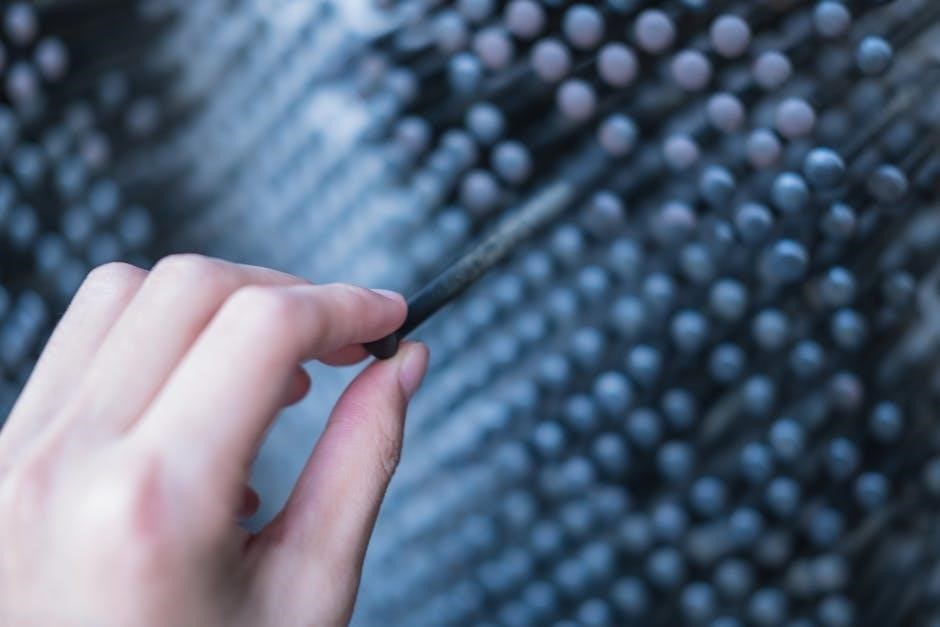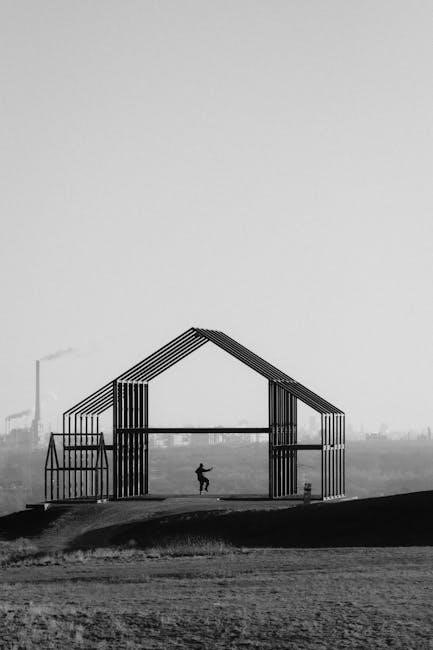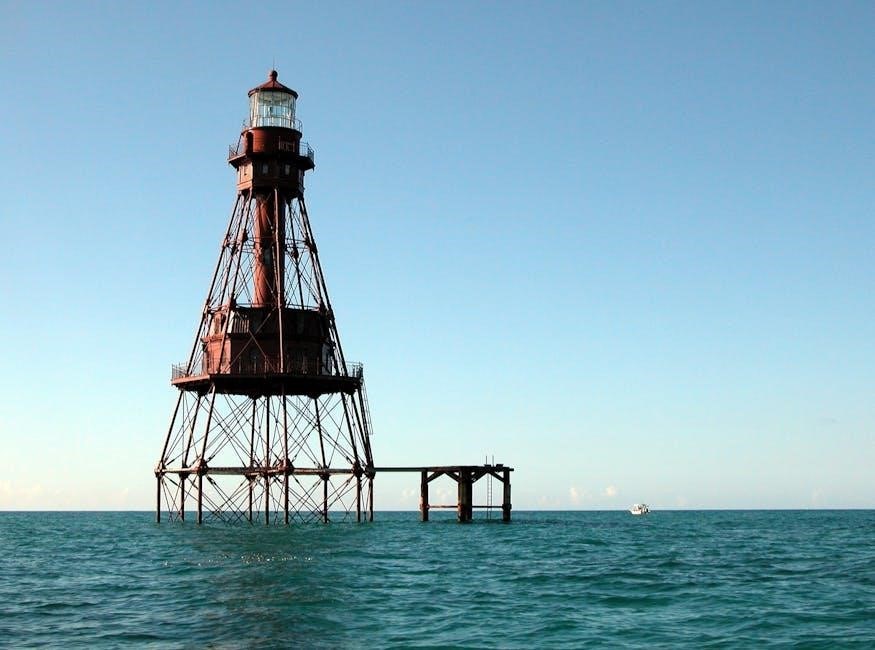Metal roofing installation is a specialized process that requires careful planning and execution. This guide provides a comprehensive overview, detailing the steps involved and essential considerations for a successful installation.
Benefits of Metal Roofing
Metal roofing offers numerous advantages that make it a popular choice for both residential and commercial buildings. Its exceptional durability ensures long-lasting protection against the elements, often outperforming traditional roofing materials. Metal roofs are highly resistant to extreme weather conditions, including strong winds, heavy snow, and hail, making them ideal for hurricane-prone areas.
Furthermore, metal roofing is a sustainable option due to its recyclability and energy efficiency. Reflective coatings can reduce cooling costs by minimizing heat absorption, lowering energy consumption. The lightweight nature of metal reduces structural stress, potentially lowering construction costs. With proper installation, a metal roof can significantly increase a property’s value and lifespan.
Safety Precautions
Safety is paramount during metal roofing installation. Slippery surfaces, sharp edges, and heights pose significant risks. Always adhere to strict safety protocols to prevent accidents and injuries.
Essential Safety Gear
Prioritize your well-being by utilizing the correct safety gear. A safety harness with a secure rope is crucial for fall protection, especially on steep roofs. Wear work gloves to protect your hands from sharp metal edges during handling and installation. Eye protection, like safety glasses or goggles, will shield your eyes from flying debris. Hearing protection, such as earplugs or earmuffs, is essential for reducing noise exposure when using power tools. Soft rubber-soled shoes offer better traction on metal surfaces, minimizing the risk of slips.
These precautions are not just recommendations, they are essential for a safe working environment. Before starting any metal roofing project, ensure that you have all the necessary safety gear and that it is in good working condition. Remember that safety is not just about protecting yourself, it’s also about protecting those around you.
Safe Practices on Metal Roofs
Working on metal roofs requires vigilance due to their slippery nature, especially when wet, dusty, or oily. Avoid walking on the roof under such conditions. Always be mindful of your surroundings, noting the locations of roof openings and edges. Exercise extreme caution when working on roofs with steep pitches, utilizing proper fall protection equipment. Communicate with your team to ensure everyone is aware of potential hazards.
When lifting or moving metal panels, use proper lifting techniques to prevent back injuries. Never rush the job; take your time and focus on each task. Regularly inspect your safety gear for wear and tear. By adhering to safe practices, you can minimize the risk of accidents and ensure a safe and productive metal roofing installation.
Preparing the Roof for Installation
Proper roof preparation is crucial before installing metal roofing. This involves inspecting the existing roof, installing nailers around protrusions, and ensuring a solid, continuous substrate for optimal performance.
Inspecting the Existing Roof
Before commencing any metal roofing installation, a thorough inspection of the existing roof structure is paramount. This involves identifying any signs of damage, such as rot, leaks, or structural weaknesses. Pay close attention to areas around chimneys, vents, and valleys, as these are common points of failure. Any damaged or deteriorated materials, including fascia boards, should be repaired or replaced to ensure a solid and stable base for the new metal roof. Remove any existing roofing materials, such as shingles, down to the sheathing. Check the sheathing for any soft spots or damage and replace as needed. Ensure that the roof surface is clean, dry, and free of debris before proceeding with the installation. This crucial step lays the foundation for a successful and long-lasting metal roofing system.
Installing Nailers and Substrate
Following the roof inspection, the next step is installing nailers and a suitable substrate. Nailers, typically constructed from lumber, provide a secure attachment point for the metal roofing panels, especially around protrusions like pipes or chimneys. Install nailers around pipes that protrude through the roof. Ensure proper flashing integration with the nailers to prevent water intrusion. The substrate, usually plywood or OSB sheathing, provides a continuous, solid surface for the metal panels. The substrate must be securely fastened to the roof rafters or trusses. Ensure that the substrate is smooth and free of any imperfections that could telegraph through the metal roofing. Proper nailer and substrate installation are crucial for the overall stability and weather resistance of the metal roof system. This step ensures proper attachment and support for the metal panels.
Metal Roofing Panel Installation
Metal roofing panel installation involves precise alignment, overlapping, and fastening to ensure a weathertight seal. Proper techniques and adherence to manufacturer specifications are crucial for a durable roof.
Minimum Roof Pitch Requirements
Minimum roof pitch is a critical factor in metal roofing installation, ensuring proper water drainage and preventing leaks. Most metal roofing panels require a certain degree of pitch to effectively shed water, with a minimum of 2/12 often specified by building codes, such as Florida’s, particularly for panels like Grand Rib-3.
However, specific requirements can vary depending on the panel type and local building regulations. In some instances, lower pitches might be acceptable if lap screws and sealant are applied meticulously to prevent water from siphoning over the ribs. Always consult the manufacturer’s installation guidelines and local codes to determine the appropriate pitch for your chosen metal roofing system, guaranteeing long-term performance and protection against water damage. Ignoring minimum pitch requirements can lead to costly repairs and compromise the roof’s integrity.
Overlapping and Fastening Panels
Proper overlapping and fastening are paramount to a successful metal roofing installation, ensuring a watertight and structurally sound roof. Begin the roof steel application at the end farthest from prevailing winds, overlapping subsequent rows of sheeting over those already applied to prevent wind-driven rain from penetrating the seams.
Fasten the trim and roofing sheets securely, typically every 6 to 10 inches along the gable edge, to resist wind uplift. The specific fastening method and fastener type will depend on the panel design and substrate material. It’s crucial to use appropriate screws or fasteners designed for metal roofing, ensuring they penetrate the substrate sufficiently for a secure hold.
Consistent and accurate overlapping, combined with properly spaced and installed fasteners, creates a robust barrier against the elements, extending the life of the metal roof and preventing costly leaks. Always consult the manufacturer’s guidelines for specific overlapping and fastening recommendations.

Cutting Metal Roofing Sheets
Cutting metal roofing sheets requires specialized tools to prevent damage to the coating and ensure clean, precise cuts. Circular saws with fine-toothed blades are recommended for longer, straight cuts.
Recommended Cutting Tools
Selecting the right tools for cutting metal roofing sheets is crucial for achieving clean cuts and preventing damage to the material’s coating. Avoid tools that generate excessive heat, as this can compromise the protective layers of the metal. Circular saws equipped with fine-tooth blades designed specifically for metal cutting are highly recommended for achieving straight, precise cuts on longer sections of roofing sheets.
For more intricate cuts or trimming, nibblers or shears can be used. These tools offer greater control and reduce the risk of deforming the metal. Always prioritize safety by wearing appropriate protective gear, including eye protection and gloves, when operating any cutting tools. Using the correct cutting tools will contribute to a professional-looking and long-lasting metal roof installation.

Wind Resistance and Design Considerations
A well-designed metal roof system offers superior wind resistance compared to other roofing types. Proper design and installation are critical to ensuring the roof can withstand extreme wind loads effectively.
Importance of Proper Design
The design phase of a metal roofing project is paramount to its long-term performance and resistance to environmental factors, especially wind. A properly designed metal roof system not only enhances the aesthetic appeal of the structure but also ensures its structural integrity and longevity. Considerations must be given to the specific geographical location, prevailing wind patterns, and local building codes.
Selecting the appropriate metal roofing profile, gauge, and fastening system is crucial for achieving optimal wind resistance. The design should account for potential uplift forces and ensure that the panels are securely attached to the underlying structure. Furthermore, proper detailing around penetrations, eaves, and ridges is essential to prevent wind-driven rain and debris from infiltrating the roof system. Ignoring these design considerations can lead to premature failure and costly repairs.
Meeting Wind Load Requirements
Metal roofing systems, renowned for their durability, must adhere to specific wind load requirements to ensure structural integrity. These requirements, often dictated by local building codes and ASCE standards, are critical for safeguarding against wind damage. Engineers and installers must calculate design wind pressures based on the building’s location, height, and exposure category. Proper fastening techniques, including screw spacing and panel overlap, are essential for resisting uplift forces.
Furthermore, selecting the appropriate metal roofing profile and gauge is crucial for meeting wind load demands. Systems should be tested and certified to withstand the calculated wind pressures. Detailed documentation, including engineering calculations and product specifications, should be readily available to demonstrate compliance. Neglecting wind load requirements can lead to catastrophic roof failure during severe weather events.

Metal Roofing on Hurricane Prone Areas
Metal roofing stands out as a superior choice in hurricane-prone regions due to its exceptional wind resistance and durability. In these high-risk areas, stringent building codes necessitate roofing systems capable of withstanding extreme wind pressures and heavy rainfall. Selecting a metal roofing system designed and tested for hurricane conditions is paramount. This includes considering factors like panel thickness, fastening methods, and underlayment materials.
Proper installation is equally crucial, requiring experienced professionals who understand the specific challenges posed by hurricanes. Reinforcing the roof structure and ensuring adequate drainage are vital steps. Regular inspections and maintenance are also essential for identifying and addressing potential vulnerabilities. Metal roofs can be constructed to meet the highest wind requirements, offering unparalleled protection.
Inspecting the Roof During Installation
Regular inspections during metal roofing installation are critical for ensuring quality and preventing future problems. Throughout the process, examine the substrate for any damage or inconsistencies that could compromise the roof’s integrity. Verify that all flashing is correctly installed and sealed to prevent water intrusion around chimneys, vents, and other roof penetrations.
Pay close attention to panel alignment and fastening. Ensure panels are properly overlapped and securely fastened according to the manufacturer’s specifications. Inspect the fasteners for correct placement and tightness, as loose or improperly installed fasteners can lead to leaks and wind damage. Furthermore, assess the overall appearance of the roof, checking for any dents, scratches, or other imperfections. Addressing issues promptly during installation can save time and money in the long run, resulting in a durable and aesthetically pleasing metal roof.
Metal Roofing over Existing Roofing
Installing metal roofing over an existing roof can be a cost-effective way to upgrade your home’s protection and appearance. However, this method requires careful assessment and preparation. Begin by thoroughly inspecting the existing roof for any signs of damage, such as rot, leaks, or structural weakness. Address these issues before proceeding with the metal roof installation.
Ensure the existing roof is clean and free of debris. Consider adding a layer of underlayment to provide a smooth surface and added protection against moisture. Installing nailers around pipes that protrude through the roof is essential for proper flashing. While metal roofing offers durability, proper installation over an existing roof is key to prevent future issues. This process can save on demolition costs but demands meticulous execution.

Metal Roofing Installation Manuals
Metal roofing installation manuals are essential resources for both DIY enthusiasts and professional contractors. These manuals provide detailed instructions, diagrams, and safety guidelines specific to various metal roofing systems. They cover everything from preparing the roof deck to properly fastening the panels and installing flashing.
Consulting the manufacturer’s manual is crucial for ensuring correct installation and maintaining the warranty. Manuals typically include information on recommended tools, fastener types, and techniques for achieving weather-tight seals. They also address critical aspects like roof pitch requirements and wind load considerations. Accessing these manuals, often available in PDF format, is a key step in a successful metal roofing project, promoting longevity and performance. Always prioritize safety and adherence to the manual’s instructions.

